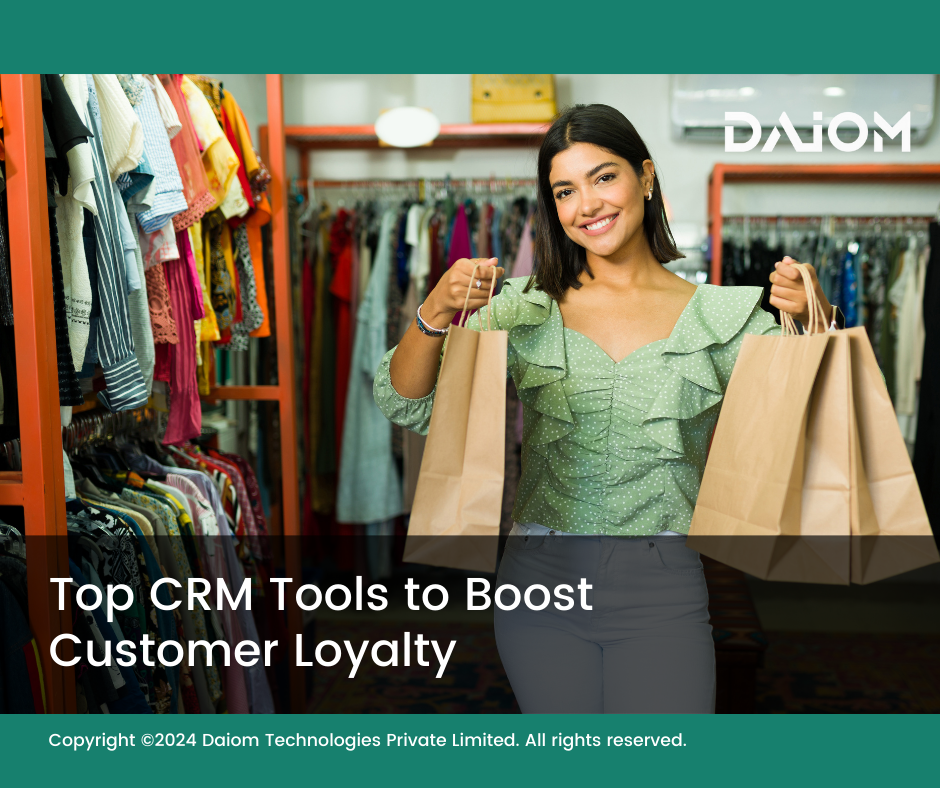Getting new customers today is often seen as the key to success. But the real win lies in keeping those customers around.
You don't earn loyalty in a day. You earn loyalty day-by-day.
Jeffrey Gitomer
Studies show it can cost 5 to 25 times more to get a new customer than to keep an existing one. Plus, boosting customer retention by just 5% can increase profits by 25% to 95%.
That’s the magic of Customer Retention Marketing—it’s all about turning one-time buyers into loyal customers. CRM helps encourage repeat purchases and maximize customer lifetime value and the right CRM tools can help you achieve that.
No wonder 84.5% of marketers use CRM tools to manage customer data and drive conversions. Big names like Amazon, Starbucks, and Sephora use CRM to create personalized experiences that keep customers coming back.
Customer retention tools help answer critical questions such as:
- Who are our most loyal customers?
- Why are customers leaving?
- What factors drive repeat purchases?
- How satisfied are our customers?
- What are the most effective channels for engaging customers?
- Which customers are at risk of churning?
- How can we improve customer satisfaction and loyalty?
- What personalized offers or messages will resonate with specific customer segments?
- How do our retention strategies compare to industry benchmarks?
- What is the ROI of our customer retention efforts?
As a continuation of the MarTech blog series, let’s look at Customer Retention, best practices for CRM, the important features of CRM and the top tools which businesses use.
Table of Contents
1. What is Customer Retention Marketing?
Customer retention marketing is all about keeping your current customers happy and coming back. Instead of just finding new customers, it focuses on building strong, long-term relationships with the ones you already have.
Adding conversion rate optimization (CRO) to your retention strategy helps you make the most of each interaction. By personalizing communications, offering rewards, and providing great support, you make customers feel valued.
The goal is to turn occasional buyers into repeat customers and loyal fans, which boosts engagement and improves your conversion rates.
2. Best 5 Practices for Customer Retention Marketing
Here are 5 strategies and insights to enhance customer loyalty, drive repeat business, and strengthen connections with your brand.
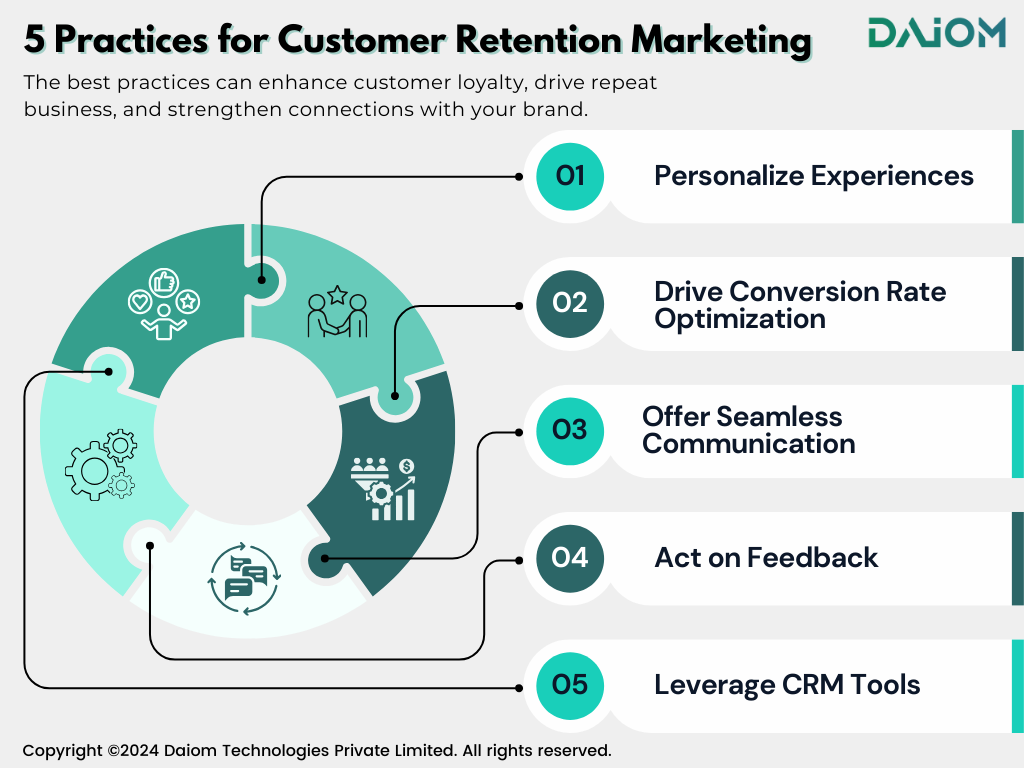
- Personalize Experiences: Use customer data to tailor interactions—address them by name, offer relevant product suggestions, and customize content based on their preferences. This makes customers feel valued, boosting loyalty.
- Drive Conversion Rate Optimization: Conversion rate optimization (CRO) helps you make the most of each interaction. By personalizing communications, offering rewards, and providing great support, you make customers feel valued.
- Offer Seamless Communication: Ensure a consistent experience across all channels—online, mobile, social media, and in-store—so customers can effortlessly continue their interactions from where they left off.
- Act on Feedback: Regularly gather and act on customer feedback to improve products or services. Respond quickly to concerns to show that you value their input.
- Leverage CRM Tools: Use CRM platforms to centralize customer data, automate personalized communication, and predict customer needs, helping to prevent churn and drive engagement.
3. Importance of Customer Retention Tools

Customer retention is the cornerstone of building lasting loyalty, but it’s a complex process that involves managing vast amounts of data and engaging customers across multiple channels.
Doing this manually isn’t just challenging—it’s nearly impossible.
That’s where MarTech tools come into play. They streamline the entire process, making it easier to analyze data, segment your audience, and personalize communications effectively.
This blog is here to guide you in selecting the right tools that will empower your CRM strategy and make customer retention more efficient and impactful.
4. Top Features of Customer Retention Marketing Tools
There are some mandatory features which each and every customer retention marketing tool must have. The following are those features:

- Multiple Output Channels: Make sure your tool supports email, SMS, push notifications, in-app messages, and social media. Reaching customers on their preferred channels boosts engagement and retention.
- Advanced Segmentation: Your tool should allow you to segment customers by demographics, behavior, and preferences. This ensures your messages are relevant and personalized, driving loyalty.
- Campaign Automation: Automate repetitive tasks like sending triggered messages. This saves time, ensures timely communication, and improves customer experience.
- Customer Data Platform (CDP): Centralize customer data from all sources for a complete view. This helps personalize interactions and make better marketing decisions.
- Campaign Analytics: Use detailed analytics to measure campaign success. Understand what works, optimize strategies, and make data-driven decisions for better retention.
- Platform Integration: Ensure your tool integrates with CRM, e-commerce, and third-party platforms for smooth data flow and a complete customer view.
- Experimentation Tools: Use A/B testing to find what resonates most with customers. Continually improve your marketing strategies based on real data.
- Ads Platform Integration: Integrate with Google and Facebook Ads to coordinate marketing efforts across all channels. Track and optimize ad performance for better results.
- AI-Powered Copywriting: Leverage AI tools to create personalized, high-quality content quickly. This ensures consistency and relevance across large audiences.
- Omni-Channel Strategy: Provide a seamless experience across all channels. A connected customer journey enhances loyalty and retention.
- Start-Up Plan: Look for flexible, affordable pricing plans tailored to startups. This allows smaller businesses to access powerful tools and grow effectively.
There is a big difference between a satisfied customer and a loyal customer.
Shep Hyken
4. Evaluation of Leading CRM Tools
Here’s a detailed comparison of CRM tools to help you see how they measure up and find the best fit for your business:
4.1. WebEngage
WebEngage is a customer engagement and retention platform serving over 600 customers in 50+ countries. In 2021 alone, it processed over 40 billion user interactions and delivered 10 billion communications.
WebEngage helps businesses deliver personalized experiences across web, mobile apps, and messaging platforms, making it an invaluable tool for driving customer loyalty.
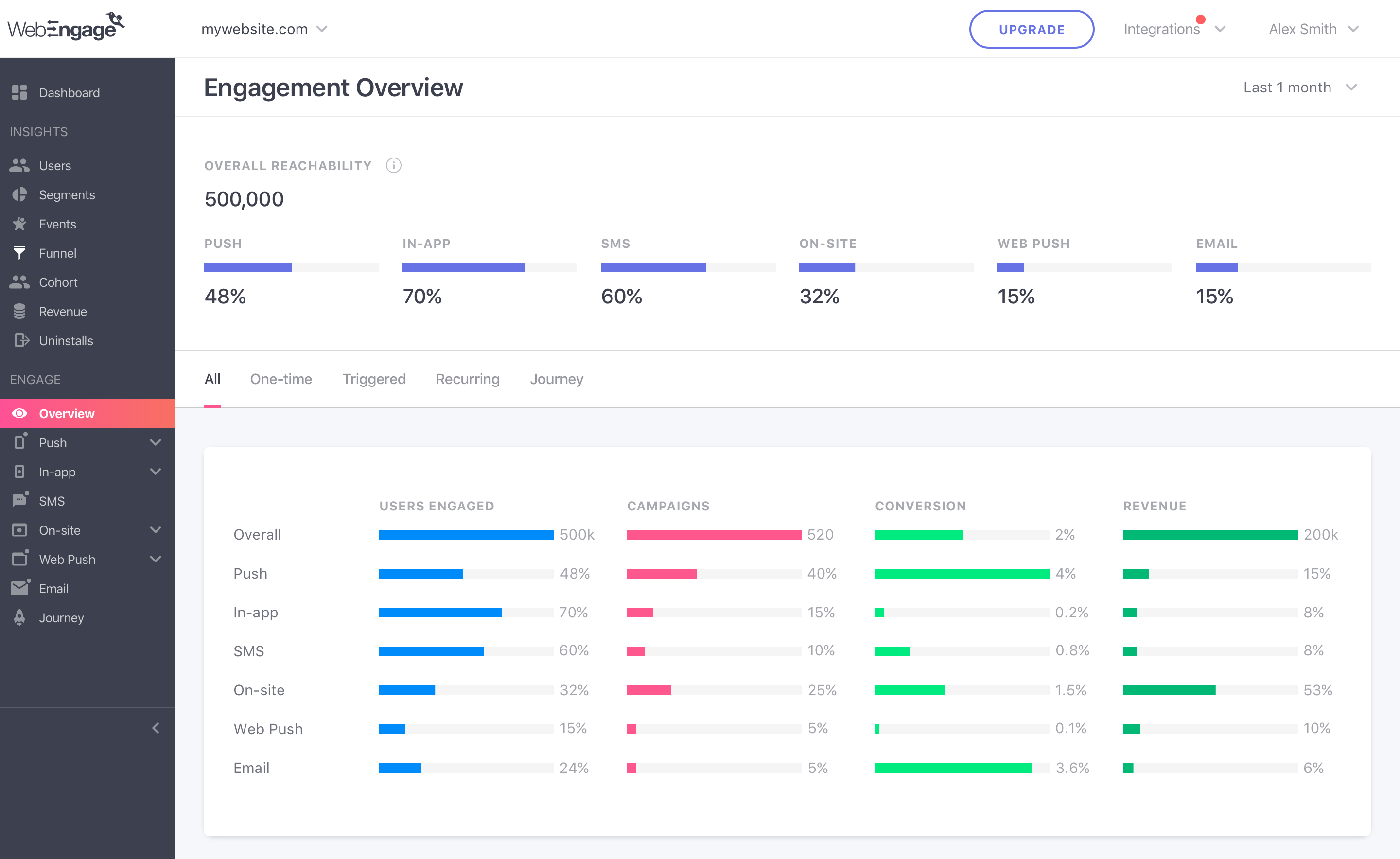
Things People Love:
- User-Friendly Interface: WebEngage’s intuitive design makes it easy for non-technical teams to manage campaigns without extensive training.
- Affordable Pricing: Compared to enterprise solutions like CleverTap and Braze, WebEngage is more affordable, especially for small and medium-sized businesses.
- Quick Implementation: WebEngage is known for its fast set-up, enabling businesses to see results quickly.
- Strong Support for Indian and Asian Markets: WebEngage’s understanding of regional preferences makes it a top choice in these markets.
- Engagement Score: This feature helps predict customer behavior and optimize engagement strategies.
Things to Watch Out For:
- Limited Advanced Analytics: Some users find its advanced analytics lacking compared to more robust platforms.
- Integration Limitations: Integration options can be limited for specific third-party tools.
- Scalability Concerns: Some users report issues as their customer base grows.
- Customer Support: Users have reported inconsistent or delayed support for complex issues.
4.2. Salesforce
Salesforce is a leading CRM platform trusted by thousands of businesses worldwide. In 2021, Salesforce powered over 150,000 businesses globally, helping them streamline operations and enhance customer engagement.
Salesforce is a leading CRM platform trusted by thousands of businesses worldwide. In 2021, Salesforce powered over 150,000 businesses globally, helping them streamline operations and enhance customer engagement.
We’ve seen that Salesforce is quite pricey—not just in terms of the tool itself, but also when it comes to running campaigns. The cost of channel integration is high, the platform is difficult and cumbersome to use, and we’ve heard multiple complaints from users.
While Salesforce is undoubtedly one of the most enterprise-grade tools out there, the common challenge is that it’s tough to use and hard to scale—especially in the Indian market. It’s not designed with India-specific needs in mind.
As a result, we’ve seen many brands in India shifting away from Salesforce due to limited channel integrations, high costs, and usability issues.

Things People Love:
- Customizability: Salesforce’s highly customizable platform allows businesses to tailor the CRM to fit their specific needs, making it adaptable to various industries and workflows.
- Comprehensive Ecosystem: With a wide range of integrations and a vast AppExchange marketplace, Salesforce connects seamlessly with other tools, enhancing its functionality.
- Scalability: Salesforce is designed to grow with your business, handling everything from small startups to large enterprises.
- Powerful Analytics: Salesforce’s advanced analytics and reporting tools provide deep insights into customer data, helping businesses make informed decisions.
- Strong Community and Support: Salesforce boasts a large, active community and extensive resources, offering robust support through forums, documentation, and professional services.
Things to Watch Out For:
- Complexity: Salesforce’s extensive features can be overwhelming, particularly for smaller teams or those without technical expertise.
- Cost: As a premium solution, Salesforce can be expensive, especially when adding advanced features or scaling up.
- Implementation Time: Setting up Salesforce can be time-consuming, requiring careful planning and potentially outside help.
- User Training: Due to its complexity, businesses may need to invest in training for their teams to fully leverage Salesforce’s capabilities.
4.3. MoEngage
MoEngage is an insights-driven customer retention platform tailored for consumer brands. It seamlessly integrates with various platforms, including analytics, automation, CDP, and data warehouses.
By leveraging AI-driven insights, MoEngage empowers marketers and product owners to create engaging omnichannel experiences that drive customer loyalty.
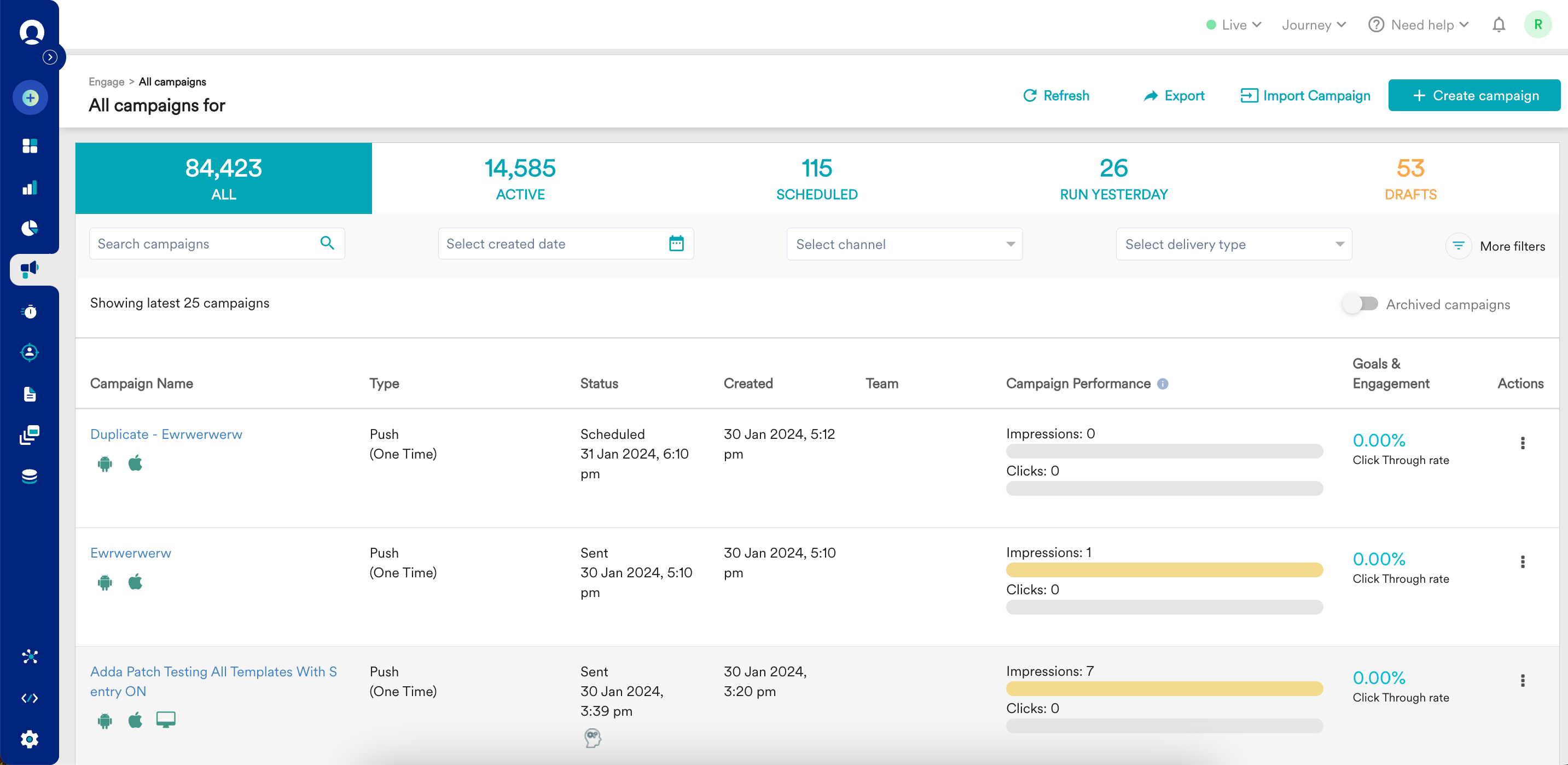
What People Love About MoEngage:
- Robust Data Integration: MoEngage excels with over 100 pre-built connectors for seamless data connectivity across multiple channels.
- Advanced Audience Segmentation: Its dynamic segmentation and targeting are highly valued, utilizing real-time data and AI/ML for smart segment discovery.
- Campaign Orchestration and Automation: The platform offers comprehensive campaign management, with pre-built templates and robust automation features.
- Customer Data Platform (CDP): MoEngage’s CDP is praised for its data unification, governance, and real-time processing, providing a complete view of customer data.
- Analytics and Reporting: Detailed metrics, cohort analysis, and customer lifetime value tracking support data-driven decision-making and insights.
Things to Watch Out For:
- Customer Support: There are reports of inconsistent or delayed support, especially for complex or niche cases.
- Pricing for Advanced Features: Some advanced features may come at a premium, potentially making it costlier than competitors for specific needs.
4.4. Klaviyo
Klaviyo is a popular email marketing tool widely used by D2C companies on Shopify. Users love its out-of-the-box templates and powerful automation features, making it both user-friendly and highly effective for scaling marketing efforts.
Since its founding in 2012, Klaviyo has become a go-to solution for online retailers aiming to create personalized marketing campaigns and enhance customer engagement.
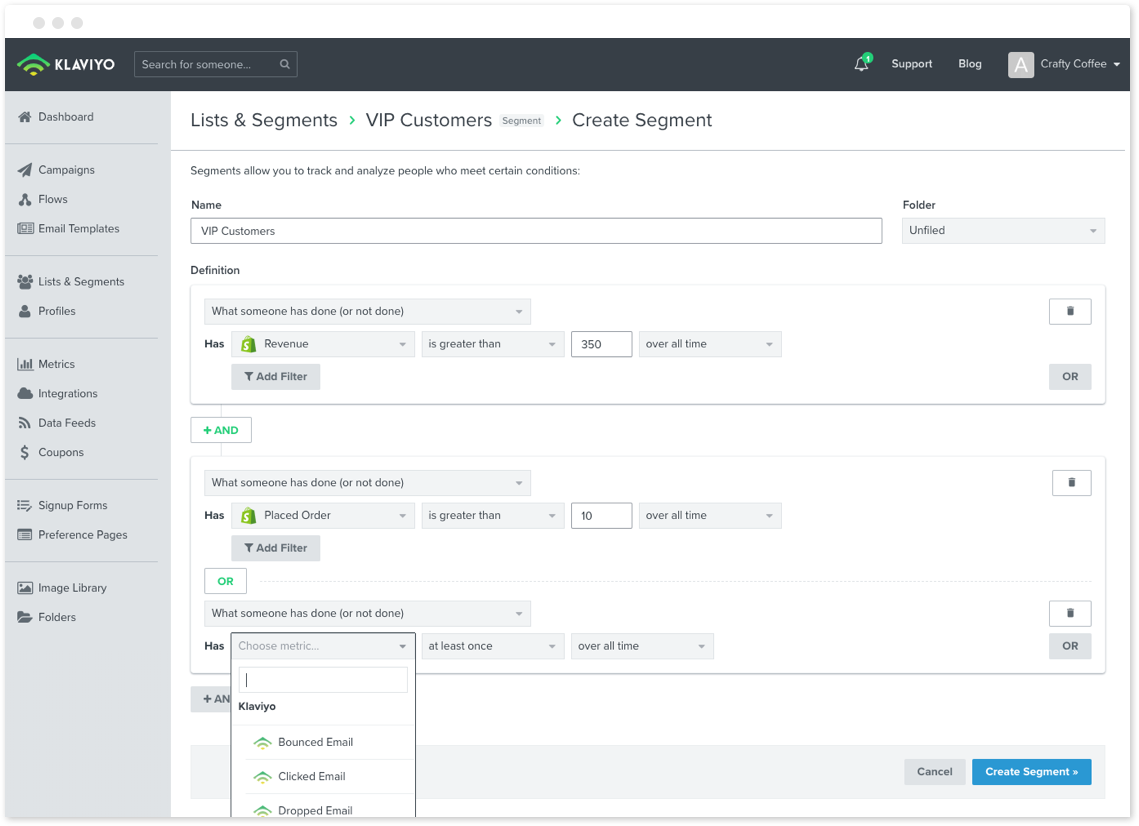
What People Love About Klaviyo (USPs):
- E-commerce Focus: Klaviyo’s deep integration with e-commerce platforms, especially Shopify, makes it a favorite among online retailers. Its features are tailored specifically for e-commerce needs, which sets it apart from more general-purpose marketing platforms.
- Easy-to-Use Email Builder: The platform’s intuitive drag-and-drop email builder, coupled with a wide range of customizable templates, makes it easy for marketers to create professional-looking emails without needing design expertise.
- Automation Workflows: Klaviyo offers a robust set of automation workflows specifically designed for e-commerce businesses. These include automated abandoned cart emails, win-back campaigns, post-purchase follow-ups, and personalized product recommendations based on browsing behavior.
- Predictive Analytics: Klaviyo’s predictive analytics features, such as customer lifetime value predictions and churn risk assessment, provide valuable insights for businesses to optimize their marketing strategies.
- Email Deliveribility: Klaviyo does a good job, showing deliverability score & highlights things to work on the increase the email deliverability.
Things to watch out for:
- Limited Outside E-commerce: If your marketing needs extend beyond e-commerce and encompass broader user engagement strategies, Klaviyo might not be the most comprehensive solution. It has limited functionalities for push notifications or in-app messaging compared to some competitors.
- Scalability for Large Businesses: Klaviyo’s pricing structure scales with the number of contacts on your email list. For very large businesses with extensive email lists, the cost can become significant.
4.5. CleverTap
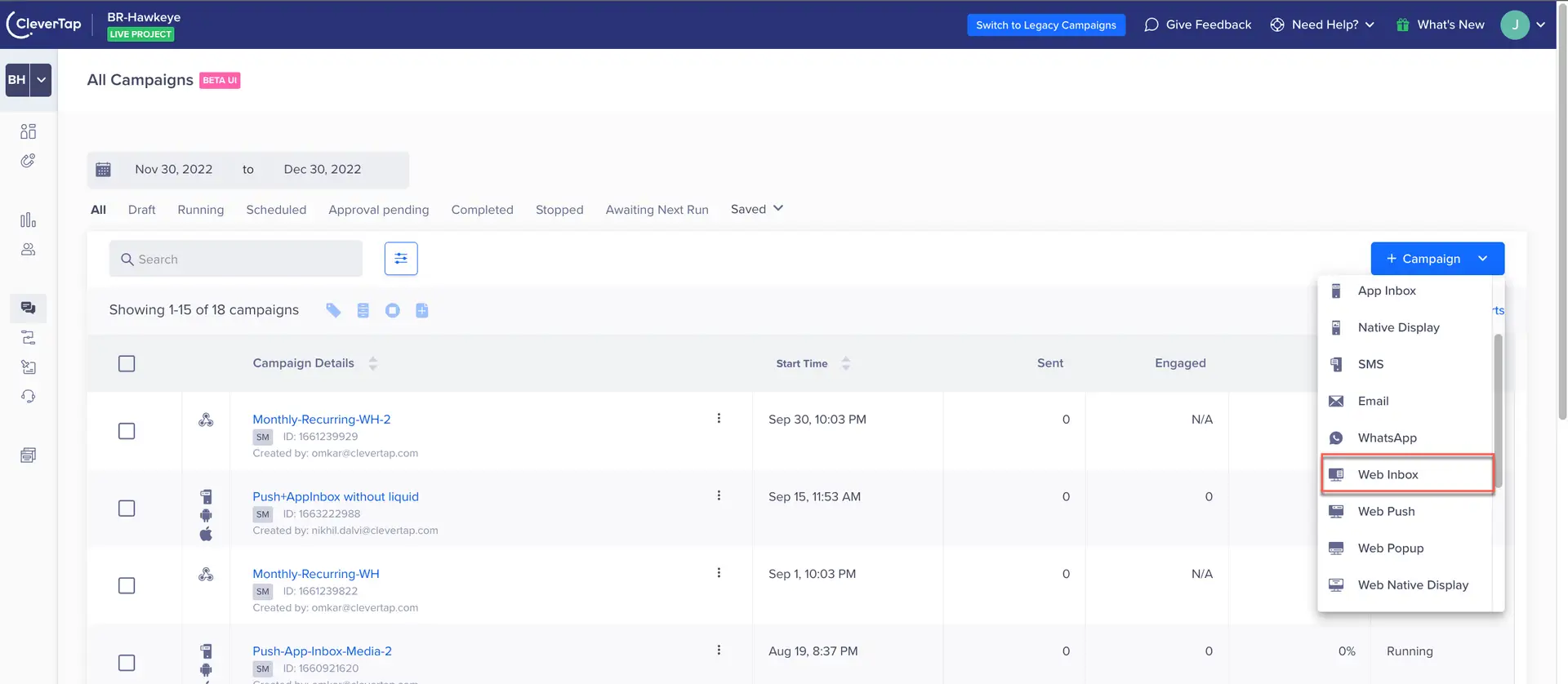
What People Love About CleverTap:
- Omnichannel Marketing: Create and automate campaigns across push notifications, email, SMS, in-app messages, and WhatsApp (as an add-on), reaching users on their preferred platforms.
- Advanced Analytics and Predictive Modeling: Industry-leading AI-driven analytics and predictive modeling, including RFM analysis and churn prediction, offer deep insights into customer behavior.
- Real-time Segmentation and Targeting: Process and act on real-time user data for highly personalized and timely campaigns based on user behavior.
- User Journey Focus: Its intuitive interface for designing personalized user journeys is praised for ease of use, especially compared to competitors like MoEngage.
Things to watch out for:
- Focus on Mobile-First: While Clevertap offers web push notifications, its core strength lies in mobile app marketing automation. Businesses with a strong focus on web engagement might find other platforms more suitable.
- Limited CDP Functionality: While Clevertap offers some CDP (Customer Data Platform) features like user profiles and segmentation, it might not be as robust as dedicated CDP solutions for managing complex customer data landscapes.
- Integration Complexity: CleverTap offers numerous integrations but some users report that integrating with certain legacy systems or niche tools can be complex and may require technical expertise.
4.6. Contlo
Contlo stands out for its user-friendly WhatsApp chatbot and automation features, with a particularly strong advantage in enabling two-way WhatsApp communication—something not commonly seen in tools like WebEngage.
This makes it easy to set up conversations that drive both higher deliverability and better engagement. While Contlo excels in communication workflows, it currently lacks AI-driven features that some advanced users might look for.
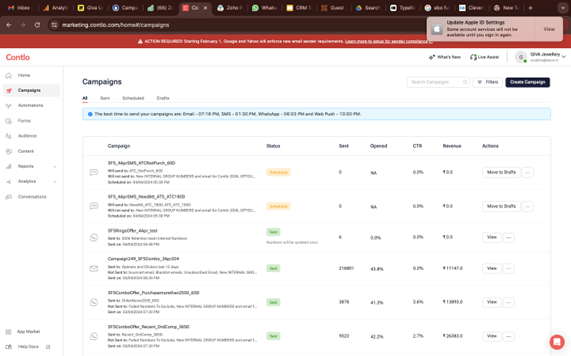
What People Love About Contlo (USPs):
-
Proactive Support via Slack: Contlo’s support team is highly responsive and collaborates through Slack, making issue resolution faster and more interactive compared to email-based support.
Great for Startups: Contlo is especially suited for early-stage startups beginning their retention journey. It’s easy to use, simple to set up, and doesn’t overwhelm with complex features — making it ideal for lean teams.
-
Good Chatbot & Automation: Contlo provides effective chatbot and automation features, with a special highlight being the 2-way WhatsApp communication setup, which is simple to implement and not commonly seen in competitors like WebEngage.
-
2-Way WhatsApp Advantage: Enables interactive communication with users, improving both message deliverability and engagement rates.
Things to watch out for:
- No extensive features in analytics: The platform is able to offer the basic KPI tracking & user behaviour analytics to satisfy the baseline customers but nothing extraordinary to compete with their long serving competitors.
- Integrations: The platform is only integrated with Google Analytics for its digital analytics feature and not with any other ones like MixPanel or Amplitude. Its e-commerce integration is only with Shopify as of now with Shopflo & Appbrew in progress.
- Mobile App Support: The mobile app support is on the weak side as it has just been launched.
- Segmentation: The RFM segment is limited in Contlo as it performs it on whole user base and not in targeted ones. It also does not support nested, attribute based or affinity segments.
- No Advanced AI Features: It currently lacks robust, AI-driven marketing features found in more advanced tools.
4.7. Braze
Braze (formerly Appboy), founded in 2011, has emerged as a leader in customer engagement, especially for large enterprises and mobile-first companies.
Braze empowers brands to build strong, personalized, and cross-channel relationships with their customers. With over 1,000 customers across more than 50 countries—including major brands like HBO, Urban Outfitters, and Tinder—Braze is at the forefront of modern customer engagement.
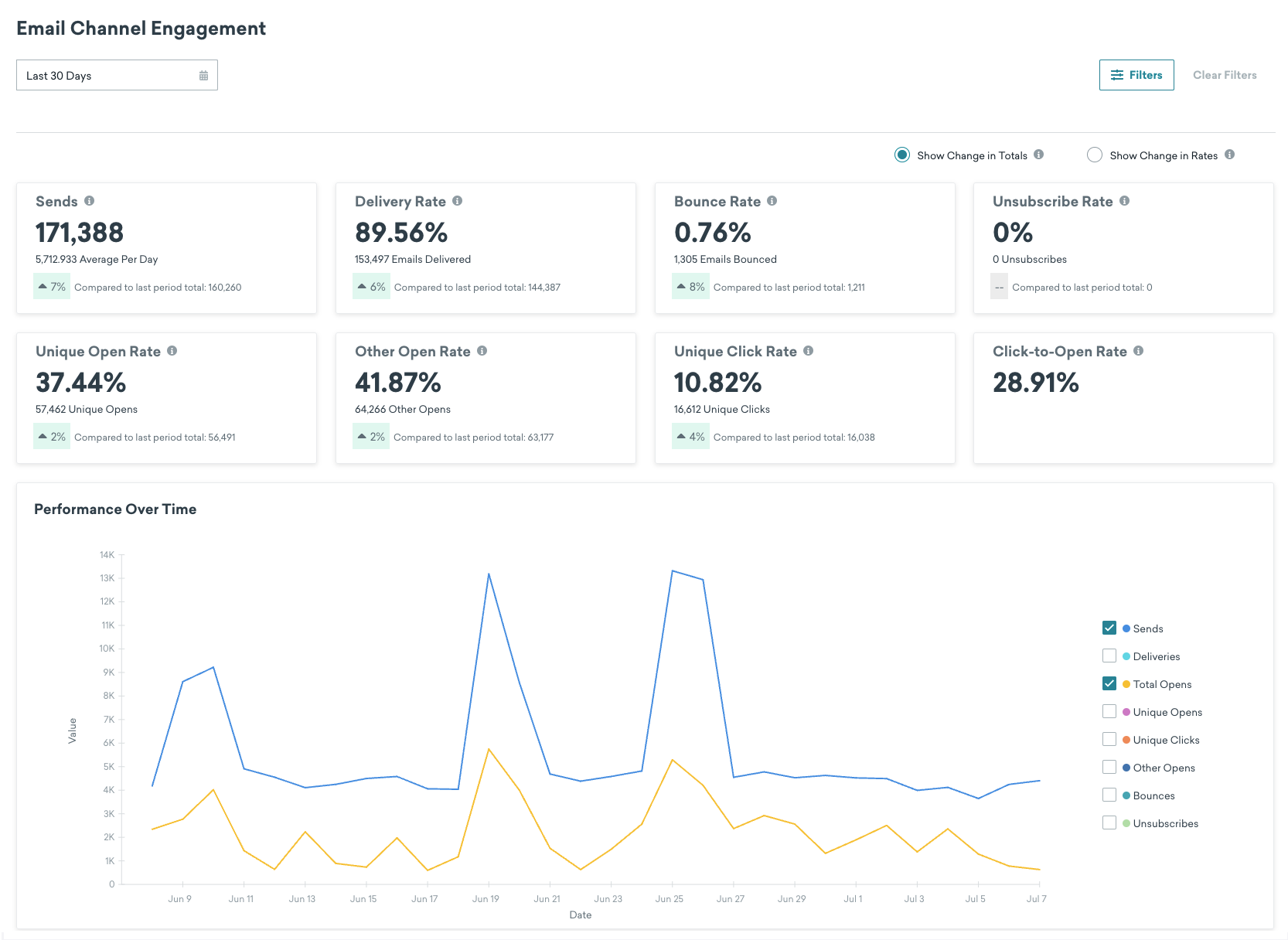
What People Love About Braze (USPs):
- Omnichannel Mastery: Braze excels in providing a unified platform for omnichannel marketing. It seamlessly integrates email, push notifications, SMS, in-app messaging, and more, allowing you to reach customers on their preferred channels.
- Customer Journey Orchestration: Braze empowers you to build complex and personalised customer journeys based on user behaviour and lifecycle stages using a tool called as Braze Canvas. This helps you deliver relevant messages at the right time, increasing customer engagement and retention.
- Sage AI: Sage AI by Braze introduces a suite of AI-driven features designed to enhance marketing efficiency and creativity. These features include AI Item Recommendations for tailored product suggestions, Personalised Paths to create customised customer journeys, and Tone Control for consistent branding in AI-generated copy.
- Scalability: The platform is known for its ability to handle massive volumes of data and interactions, making it suitable for large enterprises with millions of users.
- Strong Mobile Focus: While offering omnichannel capabilities, Braze has a particularly strong mobile focus, which is appealing to mobile-first companies and apps.
Things to watch out for:
- Complexity: Braze offers a wide range of features and functionalities, which can make it overwhelming for businesses new to omnichannel marketing or those with simpler needs.
- Cost: Braze is positioned as an enterprise-grade solution and is priced accordingly. It may be too expensive for small to medium-sized businesses or those with limited budgets.
- Overkill for Simple Needs: For businesses with straightforward marketing needs, Braze’s advanced features might be more than necessary, potentially leading to underutilization of the platform.
4.8. Adobe Marketing Platform
Adobe Experience Cloud is a robust suite of marketing, analytics, advertising, and commerce solutions that empowers businesses to deliver personalized customer experiences across every channel.
Trusted by over 75% of Fortune 100 companies, it leverages Adobe’s expertise in creative tools and data analytics to provide a comprehensive, integrated approach.
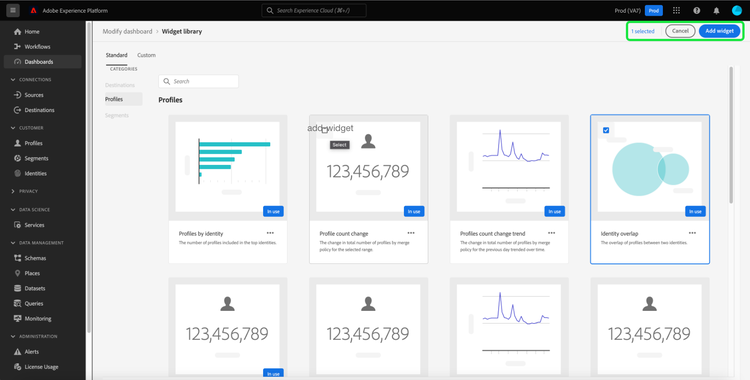
What People Love About Adobe Experience Platform (USPs):
- Comprehensive Suite: Adobe Experience Cloud offers a wide range of integrated tools covering marketing, analytics, advertising, and e-commerce, providing a holistic approach to customer experience management.
- Integration with Adobe Creative Cloud: Seamless integration with Adobe Creative Cloud allows for efficient collaboration between marketing and creative teams, streamlining the content creation and delivery process.
- Scalability and Enterprise-Grade Features: The platform is designed to handle massive amounts of data and complex use cases, making it suitable for large enterprises with diverse needs.
- Strong Industry Partnerships: Adobe has partnerships with major technology providers, expanding the platform’s capabilities and integration options.
Things to watch out for:
- Complexity and Learning Curve: The extensive feature set and numerous tools within the suite can be overwhelming. There’s a significant learning curve, and it often requires dedicated resources to manage effectively.
- Cost: Adobe Experience Cloud is positioned as an enterprise solution and comes with a correspondingly high price tag, which may not be a viable option for smaller businesses.
- Implementation Time and Resources: Implementing the full suite can be time-consuming and resource-intensive, often requiring specialised expertise or consulting services.
- Lock-in to Adobe Ecosystem: While beneficial in many ways, deep integration with Adobe’s ecosystem can make it challenging to switch to other providers for specific functionalities.
5. Conclusion
The customer retention marketing landscape features a diverse array of tools tailored to businesses of all sizes and needs. While these tools vary in strengths, pricing models, and target markets, they share a common goal of boosting customer engagement and retention.
Choosing the right CRM tool is based on factors like specific business needs, budget, technical capabilities, and long-term retention strategy. We hope this blog provided valuable insights into CRM tools and their applications.
Disclaimer – This blog reflects our experience of working with multiple tools over the past decade.
Also read our blog – How RCS Can Help Improve the ROI of Retention Marketing?
If you’d like to discuss how we can help enhance your customer retention and optimize your strategies, we’d be happy to set up a consultation call. Feel free to reach out to us at alibha@daiom.in.
For more informative content and blog, follow and stay tuned to DAiOM!
Subscribe to our NEWSLETTER!


